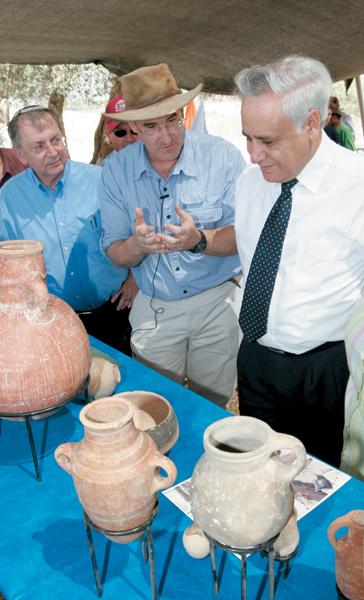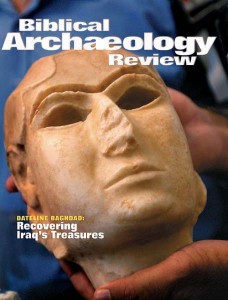Biblical Archaeology Review 31:6, November/December 2005
Strata: Giving the Philistines Their Due
Inscription Found at Gath

Israeli archaeologists working at Tell es-Safi, the Biblical-era Philistine city of Gath, have uncovered—during
the last week of this year’s dig season—what they believe to be one of the earliest Philistine inscriptions ever
found. The excavators are from the Institute of Archaeology at Bar-Ilan University and are led by Aren Maeir.
The inscription is written in recognizably Semitic letters and may contain two Indo-European names, although there is
disagreement among the experts on deciphering the letters, according to Maeir.
“The Philistines originally most probably spoke a language similar to ancient Greek; it was not a Semitic
language,” he said in mid-August, when the artifact was exhibited for the first time in the presence of Israeli
President Moshe Katsav. “They slowly came to use a Semitic language. We want to see and understand the process of this
transformation.”
The excavators also found several other inscriptions that, combined with other discoveries, may provide a “very
nice possibility to open a window to study these processes” of cultural change, Maeir said.
Gath, one of the five cities of the Philistine Pentapolis, was home to Goliath and is where David fled when he escaped
from Saul. Living in the territory that stretches from modern-day Tel Aviv down to Gaza, the Philistines were the main enemy
of the Israelites in Biblical times, and they developed an “interesting and very unique culture,” Maeir
said.
Join the BAS Library!
Already a library member? Log in here.
Institution user? Log in with your IP address.

